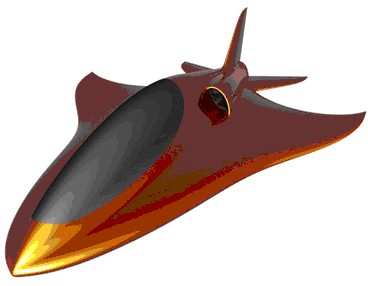Zero Emission, Hydrogen Fuel Cell Jet Performs Flawlessly
The world's first zero emission, hydrogen fuel cell jet lived up
to expectations last week, as it took to the skies of Bern,
Switzerland, flawlessly performing vertical climbs, loops and other
aerial acrobatics at speeds that reached more than 120 miles per
hour.

The flights were the result of a several-year collaborative
effort between the German Air & Space Center (DLR) and
international partners, including Horizon Fuel Cell Technologies, a
Singapore-registered company whose main operations are in
China.
The flight test proved significant achievements in design
challenges, both in terms of weight per horsepower, as well as in
terms of mechanical load, according to a press release.
Horizon provided the fuel cell that powered the flight of this
next-generation Unmanned Aerial Vehicle (UAV). UAVs are one of the
most demanding applications for emerging hydrogen fuel cell power
technologies due to constraints of size, weight, and
aerodynamics.
Scientists at Stuttgart's DLR Institute for Technical
Thermodynamics integrated Horizon's ultra-light and compact fuel
cell system into an aircraft with a total weight of just 13.2
pounds. The HyFish has a fuselage length of just four feet and a
short 3.3 foot-wingspan.
Unlike previous experiments, this is the first time a fast plane
with jet wings was able to fly with a hydrogen fuel cell as its
only power source.
The special fuel cell designed by Horizon's team produces an
electrical power output of 1 kilowatt from a total system weight of
only 6.6 pounds, which includes the pressurized hydrogen tank.
The Hyfish hydrogen jet is the second small high-tech aircraft
to fly with Horizon fuel cells in less than one year. The company's
first fuel cell UAV development began in 2005, with the
NASA-sponsored Multidisciplinary Flight Dynamics Laboratory at
California State University, Los Angeles. That led to a first
successful flight in August 25, 2006.
Horizon plans to deliver high performance fuel cells to at least
another three UAV development programs this year.
Said Horizon President and CEO George Gu, "We are confident that
record-breaking 15 to 30 hour flight times are now within reach for
small UAVs, which would offer new and disruptive possibilities in
the aviation industry."

Globally, aviation accounts for approximately 4 to 9
percent of the climate change impact of human activity,
and it is also the fastest-growing source of greenhouse gas
emissions. Success in small-size aircraft applications such as UAVs
opens new opportunities for using zero emissions fuel cell
technology in general aviation.
Fuel cells can be used to support propulsion power, as well as
on-board auxiliary power for lighting, video screens, and other
passenger comforts. Today, small UAVs designed for environmental
monitoring, surveillance, and border patrol missions are a
fast-growing segment of the aerospace sector.
In recent months, Horizon started bringing fuel cell technology
to the general public with the launch of the H-racer, the world's
first consumer fuel cell product, awarded Best Inventions of 2006
by Time Magazine, and named one of the 11 coolest products of 2007
by Business 2.0.
 Unfortunate... ANN/SportPlane Resource Guide Adds To Cautionary Advisories
Unfortunate... ANN/SportPlane Resource Guide Adds To Cautionary Advisories ANN FAQ: Turn On Post Notifications
ANN FAQ: Turn On Post Notifications ANN's Daily Aero-Term (04.29.24): Visual Approach Slope Indicator (VASI)
ANN's Daily Aero-Term (04.29.24): Visual Approach Slope Indicator (VASI) ANN's Daily Aero-Term (04.28.24): Airport Marking Aids
ANN's Daily Aero-Term (04.28.24): Airport Marking Aids ANN's Daily Aero-Linx (04.28.24)
ANN's Daily Aero-Linx (04.28.24)



